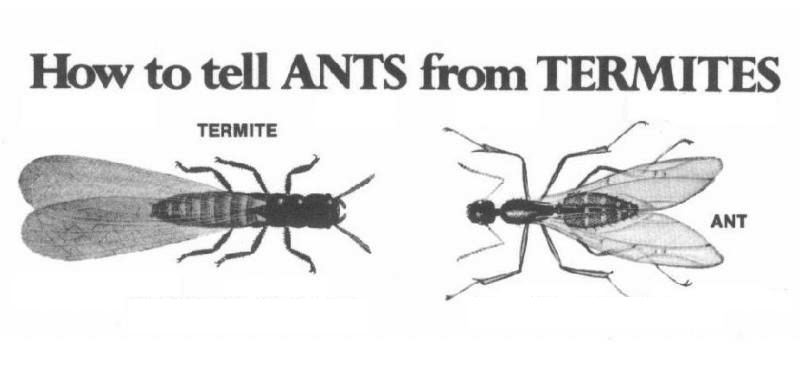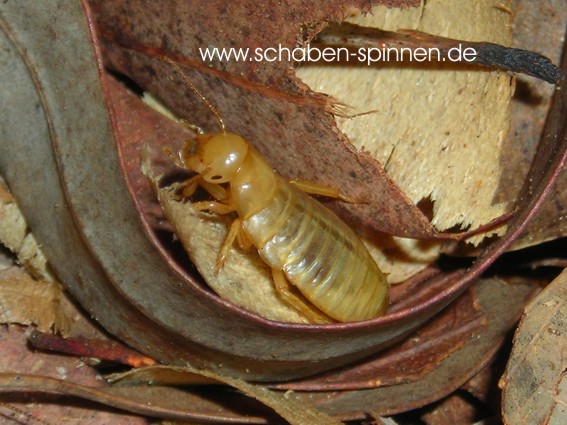Guest viewing is limited
- You have a limited number of page views remaining
- 0 guest views remaining
- Register now to remove this limitation
- Already a member? Click here to login
You are using an out of date browser. It may not display this or other websites correctly.
You should upgrade or use an alternative browser.
You should upgrade or use an alternative browser.
A welcome to the newest Blattodean
- Thread starter Zephyr
- Start date
Landy Tomiln
Second Instar
Were they just recently classified in Blattodea? I would assume that they were a breed of hymenoptera... But if MantisMan says they don't undergo complete metamorphosis... Sorry. Rambling, blah! Obviously, I would love to know more!
Welcome darling termites!
Welcome darling termites!
The eusociality of termites is a remarkable case of convergent adaptation. The strategy is a good one and that is why it arose independently in two lineages. In fact, the hymenoptera are only very recent on the scene; termites pre-date them by about 100 million or so years.Were they just recently classified in Blattodea? I would assume that they were a breed of hymenoptera... But if MantisMan says they don't undergo complete metamorphosis... Sorry. Rambling, blah! Obviously, I would love to know more!
Welcome darling termites!
The similarity ends at their castes and eusociality. Both are from very separate lineages, with the termites coming from the hemimetabolic insect line (as Mantisman said) and hymenopterans coming from the holometabolic line.I always thought termites and ants were related they are so similar.
The closest relative to "termites" (sociroaches
Perhaps the strongest evidence for their relatedness aside from morphology and genetics is that one species of termite, the Darwin termite of Australia, possesses the very same endosymbiont, the blattabacterium, as most every cockroach does. That species even lays eggs in a crude ootheca.
Landy Tomiln
Second Instar
I just covered Blattodea and Isoptera in my entomology course this morning! Such a coincidence!I always thought termites and ants were related they are so similar.
I can underline the differences between the winged ant and the winged termite for you.
Ants possess elbowed antennae, a "pinched" waist and have wings of uneven size. Wings of termites are equal in size, their antennae are beaded and they have a broad attachment between the thorax and abdomen.

Keith
Megaloblatta
I just realized, termite nymphs look like adults, but young ants look like grubs and have a cocoon stage do that also seperated them.I just covered Blattodea and Isoptera in my entomology course this morning! Such a coincidence!
I can underline the differences between the winged ant and the winged termite for you.
Ants possess elbowed antennae, a "pinched" waist and have wings of uneven size. Wings of termites are equal in size, their antennae are beaded and they have a broad attachment between the thorax and abdomen.

What makes termites so un roach like is, social behavior, living in and building a mound, temporary wings for mating adults, only one female gets to mate and the huge abdomen, lack of ootheca or live birth like roaches, territorial behavior and fighting together.
I beg to differ!I just realized, termite nymphs look like adults, but young ants look like grubs and have a cocoon stage do that also seperated them.
What makes termites so un roach like is, social behavior, living in and building a mound, temporary wings for mating adults, only one female gets to mate and the huge abdomen, lack of ootheca or live birth like roaches, territorial behavior and fighting together.
Social behavior- Cockroaches are very social compared to other insects, and not just as adults; B. craniifer can emit aggregation pheromones from their mandibles which attract all life stages. Cryptocercus, the cockroach which is more closely related to termites than other Blattodeans but whose relationship was ignored until recently, are very social and display a wide variety of social behaviors including conspecific grooming, which was unknown in the dictyoptera outside of termites until recently.
Living in and building a mound- Roaches will build structures to protect themselves from the environment. Macropanesthia and other species will build extensive burrows within which they care for their young.
Temporary wings for mating adults; only one female gets to mate - Panesthia adults will lose their wings when they found a colony. These are gnawed off by conspecifics. Cryptocercus adult pairs will pheromonally suppress nymphs in the colony from maturing until they either disperse or until the adults are unable to maintain their rank.
Lack of ootheca/ lack of live birth- Cryptocercus lack an ootheca, and species such as Macropanesthia do not have have one either. Instead, they lay bundles of eggs, and in the case of Macropanesthia, these are deposited directly into the brood pouch for incubation. Not all roaches give live birth either; classic examples are Periplaneta americana and Blatta orientalis.
Territorial behavior and fighting behavior- Hissing cockroach males will defend a territory from other males. Cryptocercus colonies will build tunnels adjacent to each other in the same log but will not connect them.
When you look across the Blattodea, the termites fit right in.
(Physiologically, it's hard to tell the difference between the two Blattodeans below

(Photo from the website in the watermark.)

Last edited by a moderator:
Keith
Megaloblatta
I guess you got me there, most of the roaches you mentioned I've never heard of so I didn't know about them.I beg to differ!
Social behavior- Cockroaches are very social compared to other insects, and not just as adults; B. craniifer can emit aggregation pheromones from their mandibles which attract all life stages. Cryptocercus, the cockroach which is more closely related to termites than other Blattodeans but whose relationship was ignored until recently, are very social and display a wide variety of social behaviors including conspecific grooming, which was unknown in the dictyoptera outside of termites until recently.
Living in and building a mound- Roaches will build structures to protect themselves from the environment. Macropanesthia and other species will build extensive burrows within which they care for their young.
Temporary wings for mating adults; only one female gets to mate - Panesthia adults will lose their wings when they found a colony. These are gnawed off by conspecifics. Cryptocercus adult pairs will pheromonally suppress nymphs in the colony from maturing until they either disperse or until the adults are unable to maintain their rank.
Lack of ootheca/ lack of live birth- Cryptocercus lack an ootheca, and species such as Macropanesthia do not have have one either. Instead, they lay bundles of eggs, and in the case of Macropanesthia, these are deposited directly into the brood pouch for incubation. Not all roaches give live birth either; classic examples are Periplaneta americana and Blatta orientalis.
Territorial behavior and fighting behavior- Hissing cockroach males will defend a territory from other males. Cryptocercus colonies will build tunnels adjacent to each other in the same log but will not connect them.
When you look across the Blattodea, the termites fit right in.
(Physiologically, it's hard to tell the difference between the two Blattodeans below

(Photo from the website in the watermark.)

Care to take a guess at the roach in the first picture?I guess you got me there, most of the roaches you mentioned I've never heard of so I didn't know about them.
Last edited by a moderator:
Landy Tomiln
Second Instar
Yes. Yes. This is true. Termites undergo simple metamorphosis like cockroaches; egg, nymph (a series of instars), adult. And ants, being hymenoptera, undergo complete metamorphosis; egg, larva, pupa, adult.I just realized, termite nymphs look like adults, but young ants look like grubs and have a cocoon stage do that also seperated them.
What makes termites so un roach like is, social behavior, living in and building a mound, temporary wings for mating adults, only one female gets to mate and the huge abdomen, lack of ootheca or live birth like roaches, territorial behavior and fighting together.
I forgot to mention that there is also a difference in the coloration between termites and ants. Termites are much lighter in color due to the fact that they spend more of their time underground. They don't have to scleritize as dramatically as the ant, who likes to forage above ground and in the sun
Last edited by a moderator:
Walking Leaf
Second Instar
@Mantis Man: Not, quite, it's not an american species. Look closely on the curved leaves around the nymph. Do you recognise them?  It's a popular species so it's not hard.
It's a popular species so it's not hard.
@Zephyr: thatks for the excellent examples, I did not know the one about Cryptocercus surpressing the development of their young.
@Zephyr: thatks for the excellent examples, I did not know the one about Cryptocercus surpressing the development of their young.
Last edited by a moderator:
All About Arthropods
Elliptorhina
That's macropanesthia rhinoceros!Care to take a guess at the roach in the first picture?
